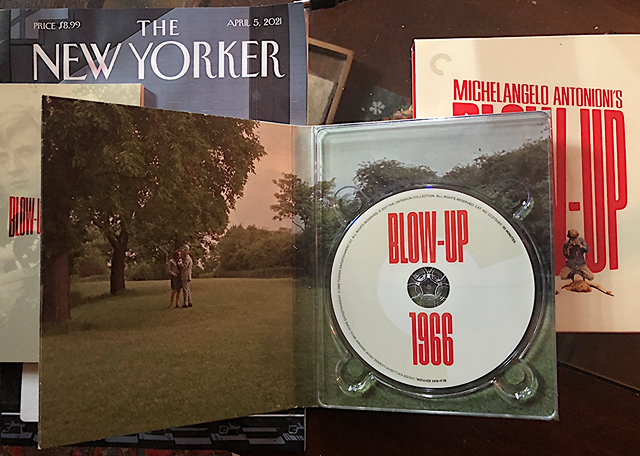In basic plot-strategy terms, Michelangelo Antonioni‘s Blow-Up (’66) kicks off in a London public park (Maryon Park in Charlton) when a youngish fashion photographer (David Hemmings) happens to take several snaps of an amorous May-December couple (Vanessa Redgrave, Ronan O’Casey).
As he develops the photos in his dark room later that day he realizes that the images show a murder in progress — one of the blow-ups reveals an assassin holding a pistol, and another a fuzzy image of the dead O’Casey lying on the grass.
Blow-Up isn’t a thriller, of course — it’s a meditation about reality vs. perception vs. artistic fancy as well as a brilliant capturing of 1966 avant-garde London, so the focus is about much more than just the ins and outs of a murder. But Hemmings encountering Redgrave-O’Casey is the inciting incident, and I’ve always adored the first glimpse of that swoony couple in a lazy-day mood.
Any other director would have called special attention to Redgrave-O’Casey…capturing them with a steady centered shot, perhaps starting from a distance and then cutting to an MCU, in effect telling the audience “you’ll want to pay attention to these people…something is about to happen.”
Instead Antonioni and dp Carlo Di Palma show Hemmings scampering around the grass while shooting some pigeons, and then the camera pans up and to the left, and as it’s moving north it catches the briefest glimpse — exactly one second’s worth — of the couple. (Go to the :31 mark.) The first-time viewer doesn’t even notice them, much less consider that they might be key players.
This is one of the 40 or 50 things that I dearly love about this film, and why I own the Criterion Bluray version. The first thing that grabbed me way back was the sound of wind rustling the park bushes and tree branches as Hemmings snaps away. So much going on and not a line of dialogue or a note of music…just the breezes.

“I am in Paris”:
Nepal, Morocco, propeller:
“I saw a man killed this morning”












